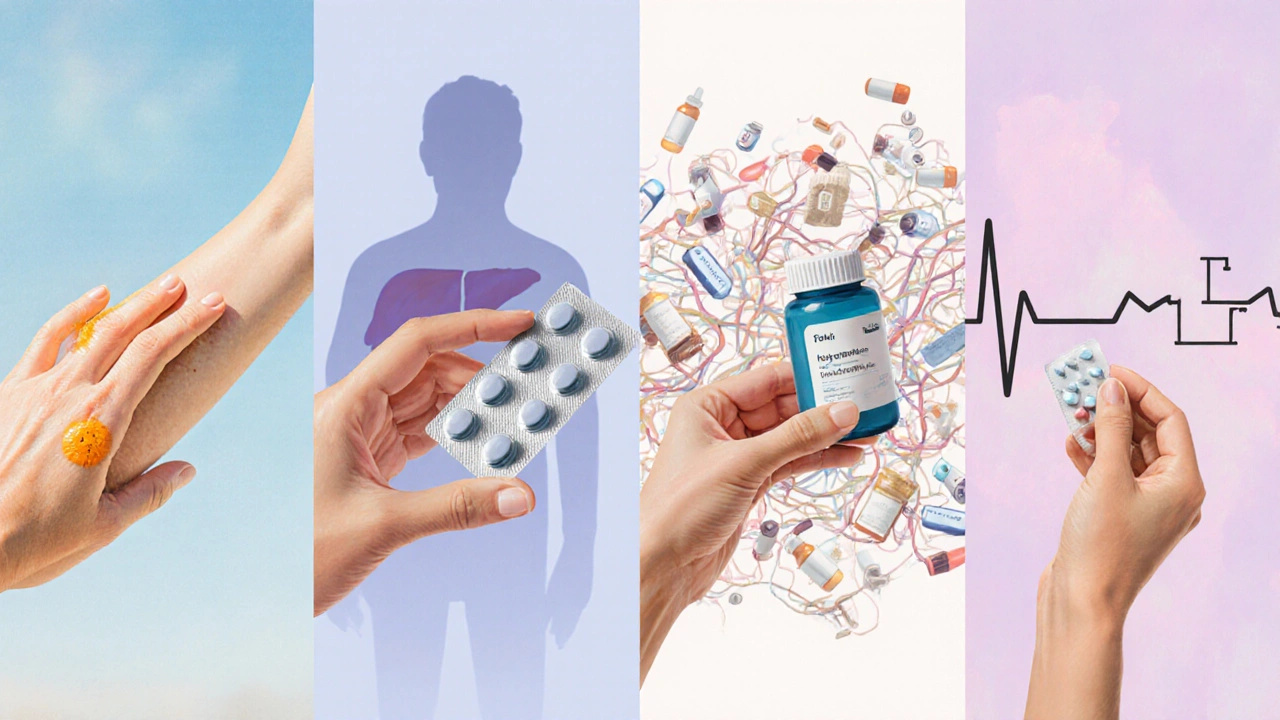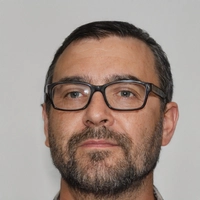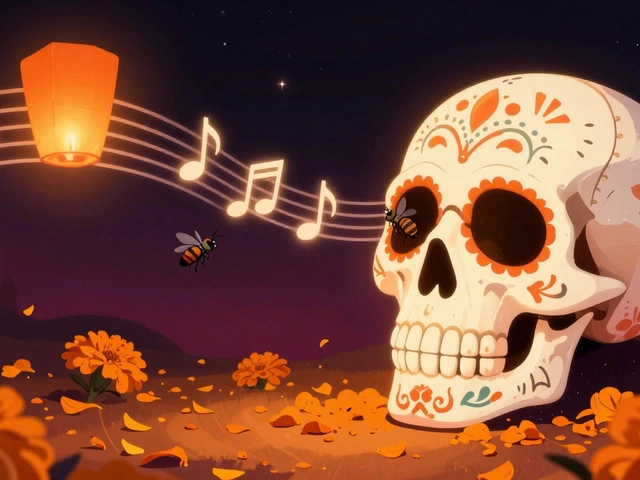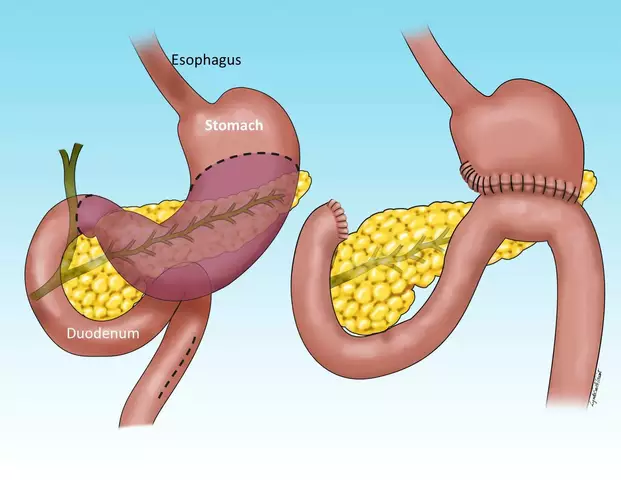Antifungal Drug Comparison Tool
Recommended Treatment Based on Your Inputs
Detailed Comparison
When it comes to treating stubborn skin fungal infections, doctors often reach for Fulvicin. But the market is crowded with newer pills and creams that promise faster relief and fewer side effects. If you’re wondering whether Fulvicin still holds its ground or if another drug might be a better fit, this guide breaks down the science, the costs, and the real‑world experience behind the most common oral antifungals.
Key Takeaways
- Fulvicin (griseofulvin) is an older oral antifungal, best for dermatophyte infections lasting several months.
- Terbinafine, itraconazole, and fluconazole are newer alternatives with shorter courses and broader spectra.
- Choosing the right drug depends on infection type, liver health, drug interactions, and price.
- Side‑effect profiles differ: griseofulvin can cause photosensitivity, while terbinafine may affect liver enzymes.
- Cost varies widely; generic terbinafine and fluconazole are usually cheaper than brand‑name itraconazole.
What is Fulvicin (Griseofulvin)?
Fulvicin is a trade name for griseofulvin, an oral antifungal derived from the fungus Penicillium griseofulvum. It was first approved by the FDA in the early 1950s and has been a staple for treating dermatophyte infections such as ringworm, athlete’s foot, and jock itch.
Griseofulvin works by binding to fungal microtubules, disrupting cell division and preventing the fungus from spreading to new skin cells. Because it targets the fungal structure rather than human cells, it’s considered safe, but the drug needs time to build up in the skin - typically 2-4 weeks before any visible improvement.
How Does Fulvicin Work?
After oral ingestion, griseofulvin is absorbed in the gastrointestinal tract and circulates in the bloodstream. It then concentrates in keratinized tissues (skin, hair, nails) where dermatophytes live. The drug interferes with fungal mitosis, effectively halting the parasite’s growth. This mechanism means the drug is most effective against infections that stay confined to the superficial layers of the skin.
Because the drug relies on slow accumulation, treatment courses often last 6‑8 weeks for mild infections and up to 12 weeks for nail involvement. Patients must avoid sun exposure, as griseofulvin can increase photosensitivity.

Main Alternatives Overview
Newer oral antifungals have entered the market with different mechanisms, shorter courses, and varied side‑effect profiles. Below are the three most commonly prescribed alternatives.
Terbinafine
Terbinafine is an allylamine antifungal that inhibits the fungal enzyme squalene epoxidase, causing a buildup of toxic squalene and ultimately cell death.
It’s highly effective against dermatophytes and works faster than griseofulvin - most skin infections clear in 2‑4 weeks. The typical dose is 250mg once daily for 2‑6 weeks, depending on the infection site.
Side effects include mild gastrointestinal upset and occasional liver enzyme elevation. Because it’s metabolized by the liver, patients with pre‑existing liver disease need careful monitoring.
Itraconazole
Itraconazole belongs to the azole class, inhibiting fungal cytochrome P450 enzymes and preventing ergosterol synthesis.
This drug has a broader spectrum, covering both dermatophytes and yeasts such as Candida. It can be taken as a pulse therapy (200mg twice daily for 1 week per month) or continuous dosing for 4‑6 weeks.
Because itraconazole strongly interacts with many medications (statins, antacids, certain antihypertensives), clinicians often reserve it for cases where other agents have failed or where the infection involves deeper tissues.
Fluconazole
Fluconazole is a triazole antifungal that also blocks ergosterol production, but it is particularly potent against yeasts and some molds.
Although not the first choice for dermatophytes, fluconazole is used off‑label for extensive tinea infections, especially when patients cannot tolerate terbinafine. Standard dosing ranges from 150‑200mg once daily for 2‑4 weeks.
The drug is relatively cheap, excreted unchanged in urine, and has a low incidence of liver toxicity when used short‑term.
Side‑Effect Snapshot
All oral antifungals carry some risk, and the choice often hinges on a patient’s overall health.
- Griseofulvin: photosensitivity, headache, GI upset, rare liver issues.
- Terbinafine: taste disturbance, rash, occasional hepatotoxicity.
- Itraconazole: strong drug‑drug interactions, heart failure risk at high doses, liver enzyme rise.
- Fluconazole: mild GI upset, rare QT prolongation, dose‑dependent liver concerns.
Comparison Table
| Drug | Mechanism | Typical Indications | Course Length | Key Side Effects | Average Generic Cost (USD) |
|---|---|---|---|---|---|
| Griseofulvin (Fulvicin) | Microtubule disruption | Dermatophyte skin & nail infections | 6-12 weeks | Photosensitivity, headache | $0.15 per tablet |
| Terbinafine | Squalene epoxidase inhibition | Dermatophyte skin infections, onychomycosis | 2-6 weeks | Liver enzyme rise, taste loss | $0.30 per tablet |
| Itraconazole | \nAzole‑mediated ergosterol synthesis block | Broad fungal spectrum, deep‑tissue infections | Pulse: 1 wk/month × 3‑4; Continuous: 4-6 weeks | Drug interactions, heart failure risk | $0.45 per capsule |
| Fluconazole | Triazole‑mediated ergosterol synthesis block | Yeast infections, off‑label dermatophyte | 2-4 weeks | QT prolongation, mild liver impact | $0.20 per tablet |

Decision Criteria: How to Choose the Right Antifungal
Below are practical questions you can ask yourself (or your clinician) to narrow the field.
- What organism is causing the infection? Dermatophytes respond well to griseofulvin and terbinafine, while yeast‑dominant cases may need fluconazole or itraconazole.
- How extensive is the infection? Nail involvement usually requires longer courses; terbinafine’s high nail penetration makes it a favorite for onychomycosis.
- Any liver or heart concerns? If you have chronic liver disease, terbinafine and itraconazole demand baseline LFTs and periodic monitoring.
- Potential drug interactions? Itraconazole is a CYP3A4 inhibitor; check medications like statins, warfarin, or certain antidepressants.
- Cost and insurance coverage? Generic terbinafine and fluconazole are often covered, while brand‑name itraconazole may need prior authorization.
When in doubt, a dermatologist can perform a culture or a KOH prep to identify the fungal species. That result often dictates the most effective drug.
Practical Tips & Common Pitfalls
- Always complete the full prescribed course, even if symptoms improve early. Stopping early can lead to relapse.
- Take griseofulvin with a fatty meal to boost absorption; terbinafine works best on an empty stomach.
- Schedule liver function tests before and after starting terbinafine or itraconazole, especially if you drink alcohol regularly.
- Avoid direct sunlight or tanning beds while on griseofulvin-use sunscreen SPF30+.
- Keep a medication diary. Some side effects (e.g., taste changes with terbinafine) appear after weeks, not days.
Frequently Asked Questions
Can I use Fulvicin for nail fungus?
Yes, but nail infections require a longer treatment-usually 12 weeks. Because griseofulvin reaches nails slowly, many clinicians prefer terbinafine for faster results.
Is terbinafine safe for pregnant women?
Terbinafine is classified as Category B in animal studies, but there are limited human data. Doctors usually avoid it during the first trimester and opt for topical treatments if possible.
What should I do if I miss a dose of griseofulvin?
Take the missed dose as soon as you remember, unless it’s almost time for the next one. Never double‑dose, because higher levels can increase side‑effects.
Do any of these drugs cause hair loss?
Hair loss is not a typical side effect of any oral antifungal. If you notice thinning, check other medications or underlying health issues.
How quickly will I see improvement with terbinafine?
Most patients report noticeable itching relief within 3‑5 days, and visible clearing of lesions in 2‑3 weeks for skin infections.
Choosing the right antifungal isn’t a one‑size‑fits‑all decision. By weighing the infection type, your health background, and practical factors like cost and dosing schedule, you can land on a therapy that clears the infection without unnecessary hassle. Talk to your healthcare provider, get a proper diagnosis, and follow the full course-your skin will thank you.









